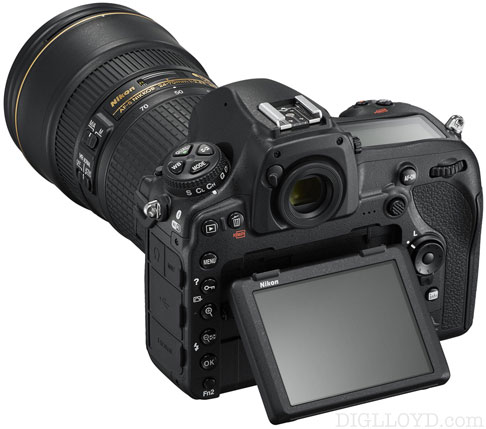Nikon D850: Silent Photography at up to 6 FPS Using Electronic Shutter
See my Nikon wish list and get Nikon D850 at B&H Photo.

The Nikon D850 has an electronic shutter option, a nice option to have especially if the readout fast: too slow and shutter distortion (jello effect) can occur. I observed major image deformation shooting with the Fujifilm GFX electronic shutter as well as other distortions of the image, but presumably the D850 has a much faster readout, which minimizes such effects.
A fully electronic shutter differs from an electronic 2nd curtain shutter (EFC shutter) in that no 2nd curtain passes shuts off the light, so that the sensor readout, if relatively slow, is subject to whatever happens during the readout. An EFC shutter is still subject to some issues (so is a fully mechanical shutter), but not nearly so troublesome.
Consider that the Hasselblad X1D has a glacially slow 300 ms readout, which makes any handheld shooting problematic: for 3/10 of a second the image is being read out, which allows a great deal of movement; think of the image being sampled in slices, so even if the shutter speed is nominally 1/4000 second, there is 3/10 of a second from start to end of the readout.
Nikon’s description of the electronic shutter conflates things that do not have value together, at least not for any night shooting I’ve done:
When capturing a night sky blanketed with stars, you probably want to avoid even the tiniest image blur to maximize the advantage of 45 megapixels. The D850’s silent photography function*1 in live view mode utilizes an electronic shutter instead of triggering any mirror or shutter movement, meaning it doesn’t cause any mechanical vibration. Photographers can capture every last detail in 45 megapixels — and in complete silence. This mode can be used in approx. 6-fps continuous shooting, but can also shoot approx. 8.6-megapixel pictures in DX image area at approx. 30 fps*2.
I’m having trouble understanding how taking pictures of stars can ever happen at 6 fps, which means no longer than 1/6 second exposure. Furthermore, an all electronic shutter has no value with long shutter speeds at all*. Weird combination of ideas that I don’t grok. I also don’t understand how 6 fps makes any sense except for motion—and motion is precisely where an all electronic shutter is problematic.
* Nor does mirror lockup. With a long exposure, any vibration dies down quickly and any exposure during that time has no impact on the exposure (speaking in terms of 5 seconds and longer or so, depending on rig stability as short as 2 seconds or longer).
Still, an all electronic shutter is a nice feature. For any scene without subjector photographer/camera movement, it’s nice and quiet and fast, with none of the sluggish Nikon D810 behavior. It also makes a lot of sense for the focus stacking / focus bracketing feature.
Maybe the confusion is in the explaining. Later in the brochure I found something more to the point:
An easy way of shooting time-lapse sequences of starry night skies — Advanced new technology to extend low-light metering range
Capturing overnight star movement is a popular application of time-lapse videos, and the D850 makes it even easier. The exposure smoothing function, Nikon’s unique feature, which reduces subtle exposure variance between frames in interval timer shooting, is further improved for the D850. Now it extends exposure metering capability beyond -3 EV*1 and lets you shoot starry night skies using aperture-priority auto mode when employed with silent interval timer shooting mode*2. Photographers can now enjoy shooting star movements from midnight until dawn, when brightness changes significantly, in one continuous interval-timer sequence. This is impossible with manual exposure and opens up new opportunities to delight and impress.
*1 ISO 100, f/1.4 lens and 20°C/68°F.
*2 Also available with silent time-lapse and silent focus shift photography.
























